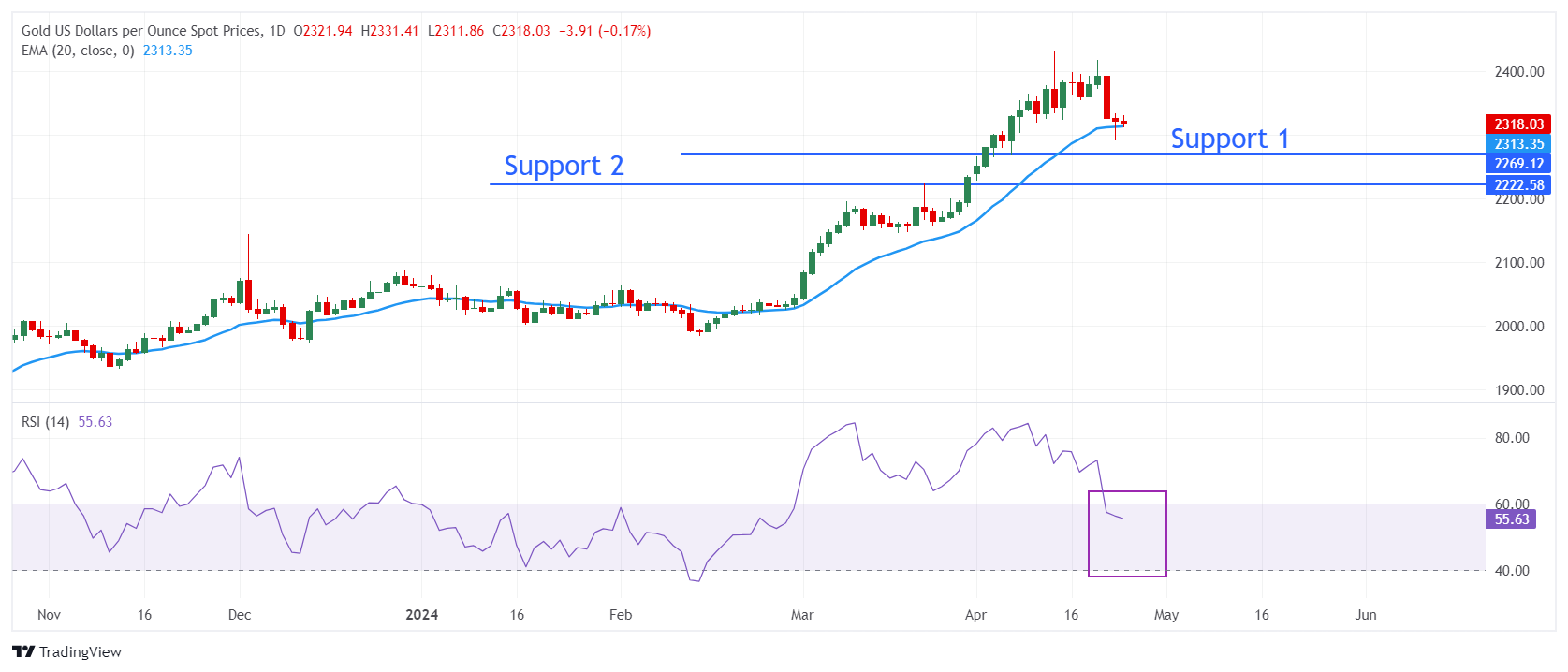In Wednesday’s early New York session, the Gold price (XAU/USD) encountered resistance as it attempted to extend its recovery above $2,320. However, its momentum was hampered by diminishing safe-haven demand amid easing tensions in the Middle East.
This weakening appeal of Gold in the near term is compounded by investor caution ahead of key economic data releases from the United States. Specifically, market participants are closely monitoring the Q1 Gross Domestic Product (GDP) release and the core Personal Consumption Expenditure (PCE) Price Index data for March, scheduled for Thursday and Friday, respectively.
The upcoming US economic data holds significant implications for Federal Reserve policy decisions, particularly regarding interest rates. Analysts are keenly awaiting cues from the Q1 GDP and underlying inflation figures to gauge the Fed’s stance.

Notably, the US core PCE Inflation, the Fed’s preferred inflation gauge, is expected to show steady growth but with a slight softening in annual figures compared to the previous month. If the inflation data surpasses expectations, it could prompt speculation of an earlier-than-anticipated shift in Fed interest rate policy, potentially leading to a sharp sell-off in Gold prices.
Persistently high US inflation indicators such as the Consumer Price Index (CPI) and wage growth in the first quarter suggest ongoing price pressures. This scenario could bolster the Fed’s argument for maintaining current interest rate levels for an extended period, thereby supporting the US Dollar and bond yields while detracting from Gold’s attractiveness as an alternative investment. Historically, such conditions favor the US Dollar and bond markets while presenting challenges for Gold as an asset class.

Despite a temporary relief rally driven by a weakened US Dollar following the release of disappointing S&P Global preliminary PMI data for April, Gold’s near-term outlook remains bearish. Concerns about the US economic outlook are evident in the S&P Global Market Intelligence’s assessment, which hints at a slowdown in economic activity at the beginning of the second quarter. Such sentiments contribute to the prevailing caution among investors, potentially exacerbating downward pressure on Gold prices.
The struggle for Gold to establish firm support near $2,300 indicates ongoing volatility and uncertainty in the market. Technical indicators such as the 14-period Relative Strength Index (RSI) suggest a waning bullish momentum, although the upside bias remains intact for now.
However, if Gold fails to maintain support above key levels, such as the 20-day Exponential Moving Average (EMA) around $2,313, it could pave the way for further downside. A breach of the three-week low near $2,265 could expose Gold to significant downward pressure, potentially testing the March 21 high at $2,223.


